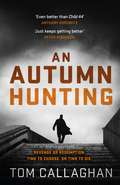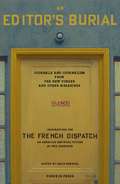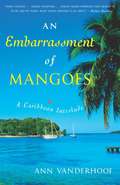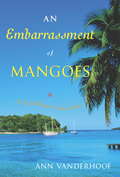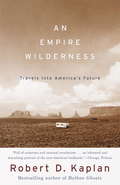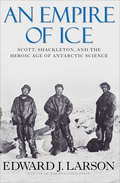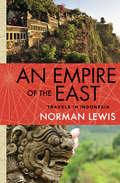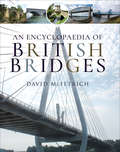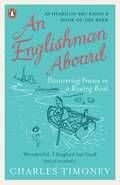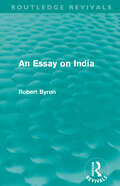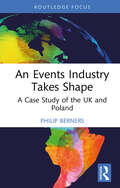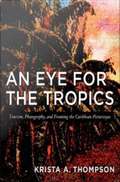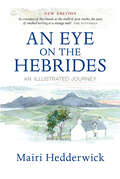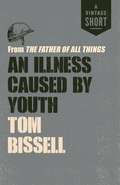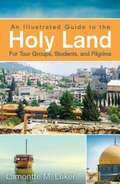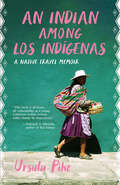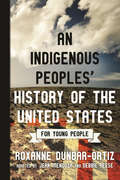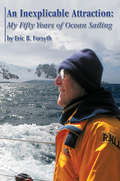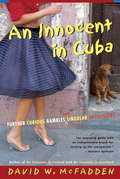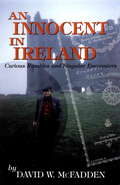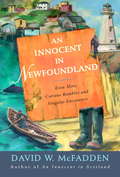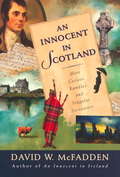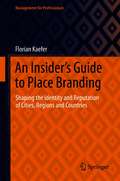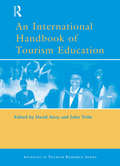- Table View
- List View
An Autumn Hunting
by Tom Callaghan'Even better than Child 44. Akyl Borubaev is a terrific creation' Anthony Horowitz'Just keeps getting better . . . buy the whole series right away' Peter Robinson, No.1 bestselling author of Sleeping in the GroundNo sooner has Akyl Borubaev been reinstated as an Inspector in the Bishkek Murder Squad than he's suspended for alleged serious crimes against the state. After an attempted assassination of a prominent minister goes spectacularly wrong, Akyl is a fugitive from his former colleagues and involved with one of Kyrgyzstan's most dangerous criminals. On the run, caught up in a illegal scheme that can only end badly, it's time for Akyl to take a stand for everything he believes in.
An Editor’s Burial: Journals and Journalism from the New Yorker and Other Magazines
by Various Wes AndersonA scintillating collection of inspirations for Wes Anderson's star-studded tenth film The French Dispatch--fascinating essays on the expatriate experience in Paris by some of the twentieth century's finest writers.A glimpse of post-war France through the eyes and words of 14 (mostly) expatriate journalists including Mavis Gallant, James Baldwin, A.J. Liebling, S.N. Behrman, Luc Sante, Joseph Mitchell, and Lillian Ross; plus, portraits of their editors William Shawn and New Yorker founder Harold Ross. Together: they invented modern magazine journalism. Includes an introductory interview by Susan Morrison with Anderson about transforming fact into a fiction and the creation of his homage to these exceptional reporters.
An Embarrassment of Mangoes: A Caribbean Interlude
by Ann VanderhoofAn Embarrassment of Mangoes is a delicious chronicle of leaving the type-A lifestyle behind -- and discovering the seductive secrets of life in the Caribbean. Who hasn't fantasized about chucking the job, saying goodbye to the rat race, and escaping to some exotic destination in search of sun, sand, and a different way of life? Canadians Ann Vanderhoof and her husband, Steve did just that. In the mid 1990s, they were driven, forty-something professionals who were desperate for a break from their deadline-dominated, career-defined lives. So they quit their jobs, rented out their house, moved onto a 42-foot sailboat called Receta ("recipe," in Spanish), and set sail for the Caribbean on a two-year voyage of culinary and cultural discovery. In lavish detail that will have you packing your swimsuit and dashing for the airport, Vanderhoof describes the sun-drenched landscapes, enchanting characters and mouthwatering tastes that season their new lifestyle. Come along for the ride and be seduced by Caribbean rhythms as she and Steve sip rum with their island neighbors, hike lush rain forests, pull their supper out of the sea, and adapt to life on "island time." Exchanging business clothes for bare feet, they drop anchor in 16 countries -- 47 individual islands -- where they explore secluded beaches and shop lively local markets. Along the way, Ann records the delectable dishes they encounter -- from cracked conch in the Bahamas to curried lobster in Grenada, from Dominican papaya salsa to classic West Indian rum punch -- and incorporates these enticing recipes into the text so that readers can participate in the adventure. Almost as good as making the journey itself, An Embarrassment of Mangoes is an intimate account that conjures all the irresistible beauty and bounty from the Bahamas to Trinidad -- and just may compel you to make a rash decision that will land you in paradise.
An Embarrassment of Mangoes: A Caribbean Interlude
by Ann VanderhoofUnder the Tuscan Sun meets the wide-open sea . . . An Embarrassment of Mangoes is a delicious chronicle of leaving the type-A lifestyle behind -- and discovering the seductive secrets of life in the Caribbean.Who hasn't fantasized about chucking the job, saying goodbye to the rat race, and escaping to some exotic destination in search of sun, sand, and a different way of life? Canadians Ann Vanderhoof and her husband, Steve did just that.In the mid 1990s, they were driven, forty-something professionals who were desperate for a break from their deadline-dominated, career-defined lives. So they quit their jobs, rented out their house, moved onto a 42-foot sailboat called Receta ("recipe," in Spanish), and set sail for the Caribbean on a two-year voyage of culinary and cultural discovery.In lavish detail that will have you packing your swimsuit and dashing for the airport, Vanderhoof describes the sun-drenched landscapes, enchanting characters and mouthwatering tastes that season their new lifestyle. Come along for the ride and be seduced by Caribbean rhythms as she and Steve sip rum with their island neighbors, hike lush rain forests, pull their supper out of the sea, and adapt to life on "island time."Exchanging business clothes for bare feet, they drop anchor in 16 countries -- 47 individual islands -- where they explore secluded beaches and shop lively local markets. Along the way, Ann records the delectable dishes they encounter -- from cracked conch in the Bahamas to curried lobster in Grenada, from Dominican papaya salsa to classic West Indian rum punch -- and incorporates these enticing recipes into the text so that readers can participate in the adventure.Almost as good as making the journey itself, An Embarrassment of Mangoes is an intimate account that conjures all the irresistible beauty and bounty from the Bahamas to Trinidad -- and just may compel you to make a rash decision that will land you in paradise.From the Hardcover edition.
An Empire Wilderness
by Robert D. KaplanHaving reported on some of the world's most violent, least understood regions in his bestsellers Balkan Ghosts and The Ends of the Earth, Robert Kaplan now returns to his native land, the United States of America. Traveling, like Tocqueville and John Gunther before him, through a political and cultural landscape in transition, Kaplan reveals a nation shedding a familiar identity as it assumes a radically new one. An Empire Wilderness opens in Fort Leavenworth, Kansas, where the first white settlers moved into Indian country and where Manifest Destiny was born. In a world whose future conflicts can barely be imagined, it is also the place where the army trains its men to fight the next war. "A nostalgic view of the United States is deliberately cultivated here," Kaplan writes, "as if to bind the uncertain future to a reliable past." From Fort Leavenworth, Kaplan travels west to the great cities of the heartland--to St. Louis, once a glorious shipping center expected to outshine imperial Rome and now touted, with its desolate inner city and miles of suburban gated communities, as "the most average American city." Kaplan continues west to Omaha; down through California; north from Mexico, across Arizona, New Mexico, and Texas; up to Montana and Canada, and back through Oregon. He visits Mexican border settlements and dust-blown county sheriffs' offices, Indian reservations and nuclear bomb plants, cattle ranches in the Oklahoma Panhandle, glacier-mantled forests in the Pacific Northwest, swanky postsuburban sprawls and grim bus terminals, and comes, at last, to the great battlefield at Vicksburg, Mississippi, where an earlier generation of Americans gave their lives for their vision of an American future. But what, if anything, he asks, will today's Americans fight and die for? At Vicksburg Kaplan contemplates the new America through which he has just traveled--an America of sharply polarized communities that draws its population from pools of talent far beyond its borders; an America where the distance between winners and losers grows exponentially as corporations assume gov-ernment functions and the wealthy find themselves more closely linked to their business associates in India and China than to their poorer neighbors a few miles away; an America where old loyalties and allegiances are vanishing and new ones are only beginning to emerge. The new America he found is in the pages of this book. Kaplan gives a precise and chilling vision of how the most successful nation the world has ever known is entering the final, and highly uncertain, phase of its history.
An Empire of Ice: Scott, Shackleton, and the Heroic Age of Antarctic Science (Playaway Adult Nonfiction Ser.)
by Edward J. LarsonA Pulitzer Prize–winning author examines South Pole expeditions, &“wrapping the science in plenty of dangerous drama to keep readers engaged&” (Booklist). An Empire of Ice presents a fascinating new take on Antarctic exploration—placing the famed voyages of Norwegian explorer Roald Amundsen, his British rivals Robert Scott and Ernest Shackleton, and others in a larger scientific, social, and geopolitical context. Recounting the Antarctic expeditions of the early twentieth century, the author reveals the British efforts for what they actually were: massive scientific enterprises in which reaching the South Pole was but a spectacular sideshow. By focusing on the larger purpose of these legendary adventures, Edward J. Larson deepens our appreciation of the explorers&’ achievements, shares little-known stories, and shows what the Heroic Age of Antarctic discovery was really about. &“Rather than recounting the story of the race to the pole chronologically, Larson concentrates on various scientific disciplines (like meteorology, glaciology and paleontology) and elucidates the advances made by the polar explorers . . . Covers a lot of ground—science, politics, history, adventure.&” —The New York Times Book Review
An Empire of the East: Travels in Indonesia
by Norman LewisFrom Sumatra to East Timor and beyond, An Empire of the East is a fascinating look at a rapidly changing island nationIn An Empire of the East, renowned travel essayist Norman Lewis takes readers to Indonesia, where some thirteen thousand islands in the South Pacific are each colored with their own unique cultures and histories. With more than three hundred ethnic groups speaking two hundred fifty languages, the warmth and generosity of the island people is matched only by the country&’s complicated political and social landscape. Lewis&’s account tells of a country whose remarkable cultures—as well as its flora and fauna—are increasingly shaped by the waves of modernity and global tourism.
An Encyclopaedia of British Bridges
by David McFetrich&“An already impressive reference work has been made significantly more valuable . . . a well-illustrated alphabetized compendium of notable bridges.&” —The Happy Pontist Bridges have a universal appeal as examples of man&’s mastery of nature, from picturesque packhorse bridges to great spans stretching across broad estuaries, and the development of the technology that allows ever more audacious constructions is never-ending. Of the million or more bridges throughout Great Britain, David McFetrich has selected those that are significant in terms of their design, construction or location, or of their connections with people or events of history. His definitive book contains 1,600 separate entries for individual bridge sites or related groups of bridges covering more than 2,000 different structures, 165 general entries about different types of bridge and such topics as collapses and failures, and a summary of about 200 record-holding bridges in 50 different categories. The concise text is supported by more than 900 illustrations and diagrams. The result is a fascinating and readily accessible compendium. The Institute of Civil Engineers (ICA) is also on board. &“A valuable resource to use . . . if you plan to visit some of these structures while on holiday or are merely planning a day out.&” —East Yorkshire Family History Society &“Well-written and researched and eminently readable . . . Because of the ubiquity of bridges throughout Great Britain, this volume should have wide appeal.&” —NZ Crown Mines &“Full of details covering the many bridges around the UK . . . I found it fascinating to see the variety of bridges around Britain, even the ones not railway related.&” —Rail Advent
An Englishman Aboard: Discovering France in a Rowing Boat
by Charles TimoneyFrom the author of Pardon My French and A Certain Je Ne Sais Quoi, this is the charming and hilariously funny story of one man's attempt to travel the entire length of the Seine by boatWhen Charles shows his friends the rowing boat he has spent the last six months building, he little realises the adventures that lie ahead. Several glasses of champagne later (it is New Year's Eve), he finds himself betting he will travel the entire length of the Seine from source to the sea in the next year and discover the true France. But the reality proves somewhat more difficult than he had expected. As Charles sets sail into an unvarnished France on a variety of craft from steamers to police patrol boats to inflatables, he encounters truffle-thieving terriers and obsessive fishermen, grapples with strong rapids and stubborn cattle, and is nearly destroyed by a cheese so smelly it comes with its own health warning.This is the charming and often hilarious story of Charles's Quixotic quest - and the most unique guide to the true France that you will find.Reviews:'There are new year's resolutions and then there are those rash decisions that come after the last bottle has been drunk on the last night of the year. The journey down the Seine that Charles Timoney describes in his third book about France stemmed from the latter ... a charming story of life along the river ... that lingers in the mind' Sunday Times (Books of the Month)'A wonderful view of France as seen from the water, and through the eyes of a genuinely funny writer - I laughed out loud' Philip Marsden (author of The Levelling Sea)About the author:When Charles Timoney and his French wife were both made redundant in the same week, they decided to try living in France for a year or so. It proved much harder than expected. Charles's O level in French was little help when everyone around him consistently used a wide variety of impenetrable slang and persisted in the annoying habit of talking about things he had never heard of. But they stayed. Two decades and two thoroughly French children later, An Englishman Aboard is Charles's third book on his experience of France, the French people and the French language: Pardon My French: Unleash Your Inner Gaul, A Certain Je Ne Sais Quoi: The Ideal Guide to Sounding, Acting and Shrugging Like the French and now An Englishman Aboard.
An Essay on India (Routledge Revivals)
by Robert ByronFirst published in 1931, Robert Byron’s Essay on India evaluates the state of colonial rule in India and analyses the contemporary problems facing the country. Based upon Byron’s travelling experiences within India in 1929 as a correspondent for the Daily Express, the work explores political factors more fully than in Byron's earlier writings, evaluating the successes and failures of British colonialism in the region.
An Events Industry Takes Shape: A Case Study of the UK and Poland
by Philip BernersThis timely book critically evaluates the factors which shape an events industry as it develops, with the aim of helping to narrow the disparate behaviours and practices of organisers within the global marketplace of international events.Stemming from an innovative qualitative research project, which included interviews with senior events organisers at landmark venues in both the UK and Poland, this volume provides an insight into both the emerging events industry in Poland and the developed events industry in the UK, highlighting cross-cultural risk and safety gaps that may impact organisers, clients, attendees, suppliers, and workers. The book highlights the importance of a unanimous global approach to events organisation, the creation of a professional community of practice, and ethos of self-learning within the events industry and the need for an international professional association for organisers involved with providing international events. The book explores the three themes of 'Event Culture', 'Tourism and Events', and 'Risk Awareness at Events', thus focusing on long-term factors of events industries.International in scope, this book will appeal to students on courses such as managing events, planning events, project management, and hospitality and tourism studies, as well as events organisers in locations where events is an emerging industry.
An Eye For The Tropics: Tourism, Photography, and Framing the Caribbean Picturesque
by Krista A. ThompsonImages of Jamaica and the Bahamas as tropical paradises full of palm trees, white sandy beaches, and inviting warm water seem timeless. Surprisingly, the origins of those images can be traced back to the roots of the islands' tourism industry in the 1880s. As Krista A. Thompson explains, in the late nineteenth century, tourism promoters, backed by British colonial administrators, began to market Jamaica and the Bahamas as picturesque "tropical" paradises. They hired photographers and artists to create carefully crafted representations, which then circulated internationally via postcards and illustrated guides and lectures. Illustrated with more than one hundred images, including many in color, An Eye for the Tropics is a nuanced evaluation of the aesthetics of the "tropicalizing images" and their effects on Jamaica and the Bahamas. Thompson describes how representations created to project an image to the outside world altered everyday life on the islands. Hoteliers imported tropical plants to make the islands look more like the images. Many prominent tourist-oriented spaces, including hotels and famous beaches, became off-limits to the islands' black populations, who were encouraged to act like the disciplined, loyal colonial subjects depicted in the pictures. Analyzing the work of specific photographers and artists who created tropical representations of Jamaica and the Bahamas between the 1880s and the 1930s, Thompson shows how their images differ from the English picturesque landscape tradition. Turning to the present, she examines how tropicalizing images are deconstructed in works by contemporary artists--including Christopher Cozier, David Bailey, and Irne Shaw--at the same time that they remain a staple of postcolonial governments' vigorous efforts to attract tourists.
An Eye on the Hebrides: An Illustrated Journey
by Mairi HedderwickMairi Hedderwick embarks on a six-month-long journey to 40 islands from Arran to Lewis, recounting her pilgrimage around the archipelago of the Western Isles with which she has had a lifelong love affair. Filled with wit and wisdom that is matched by her spell-binding illustrations, Mairi Hedderwick portrays the islands in all their diversity, with swift and perceptive cameos of everyday life drawn with humour and affection alongside gorgeous landscapes which capture the truly magical beauty of the Hebrides.
An Illness Caused by Youth: from The Father of All Things
by Tom BissellVeteran Jack Bissell only deepened the abyss between him and his son Tom when he talked about the Vietnam war. But, when a magazine editor sends the two back to Vietnam for a story, Tom reopens the conversation and confronts his father’s past and the man that had seemed impossibly remote. Part history, memoir, and travelogue, Tom Bissell’s is a haunting, riveting exploration of the war’s personal, political, and cultural impact from the perspective of the generation that grew up in the wake of the conflict and a wise reckoning of the bond forged between fathers and sons. A Vintage Shorts Vietnam Selection. An ebook short.
An Illustrated Guide to the Holy Land for Tour Groups, Students, and Pilgrims
by Lamontte M. LukerAs the geographic heart and soul of Judaism, Islam, and Christianity, the Holy Land has immense significance for the millions of visitors each year. But since the fifth century BC, enthusiastic and curious people have needed a guide as they travel to see the sites for themselves.This book is different because it not only gives the historical, archaeological descriptions wedded to the biblical text, but it is an appropriate resource for spiritual formation and cross-cultural dialog.Packed with the latest information, this book locates and introduces the reader to popular and less-familiar sites such as Bethlehem, Shepherds’ Field, Church of the Nativity, Roman Catholic Church of St. Catherine, the Herodium, Mount of Olives, Old City of Jerusalem, Wadi Kelt, Mt. Sinai, Church of the Holy Sepulchre, the site of Church of St. Mary of the Latins, Temple Mount, El-Aksa Mosque, Dome of the Rock, Hezekiah's Tunnel, the traditional place of the Last Supper, Siloam Pool, the traditional tomb of King David, the house of Caiphas the High Priest, Shrine of the Book, Herod's Antonio Fortress, Golgotha, Bethany, Tomb of Lazarus, Bethphage, Pater Noster Church, Gethsemane, and many others. Each entry explains the history and topography of the site as well as its function and significance as it is linked to the relevant biblical passages.This book will not only inform you but help you better understand your faith. Journey to the Holy Land with indispensable archaeological information linked to the biblical story.
An Illustrated Journey: Inspiration From the Private Art Journals of Traveling Artists, Illustrators and Designers
by Danny GregoryTravel + Sketching = InspirationWhen we travel, we don't want to follow the same itinerary as everyone who's come before us. We want to feel like explorers, adventurers in undiscovered territory. And that's exactly what sketching can bring to the travel experience.An Illustrated Journey captures the world through the eyes of 40 talented artists, illustrators and designers. You'll experience the wonder of seeing familiar sights through a fresh lens but, more important, you'll be inspired to set pen to paper and capture your own vistas.The really wonderful thing about a sketchbook is that it can be totally private. You don't have to have an ounce of talent to enjoy learning how to really see what's in front of you. But lucky for us, the sketchbooks captured here are lovely, creative, intimate windows into each artist's mind.So, whether you're just returning to the art of drawing, abandoned by most of us after childhood, or you're looking for inspiration to take your illustration work in a new direction, An Illustrated Journey will take you on a wonderful trip of the imagination. All you need to pack are a pencil and a piece of paper.
An Indian Among Los Indígenas: A Native Travel Memoir
by Ursula PikeA gripping, witty memoir about indigeneity, travel, and colonialism."Ursula Pike's memoir is unlike any other I've read, with her perceptive, always-seeking, and lovely narrative voice." —Susan Straight, author of Mecca"This book is alive with a spirit that welcomed mine to meet it." —Elissa Washuta, author of White MagicWhen she was twenty-five, Ursula Pike boarded a plane to Bolivia and began her term of service in the Peace Corps. A member of the Karuk Tribe, Pike sought to make meaningful connections with Indigenous people halfway around the world. But she arrived in La Paz with trepidation as well as excitement, 'knowing I followed in the footsteps of Western colonizers and missionaries who had also claimed they were there to help.' In the following two years, as a series of dramatic episodes brought that tension to boiling point, she began to ask: what does it mean to have experienced the effects of colonialism firsthand, and yet to risk becoming a colonizing force in turn?An Indian Among los Indígenas, Pike’s memoir of this experience, upends a canon of travel memoirs that has historically been dominated by white writers. It is a sharp, honest, and unnerving examination of the shadows that colonial history casts over even the most well-intentioned attempts at cross-cultural aid. It is also the debut of an exceptionally astute writer with a mastery of deadpan wit. It signals a shift in travel writing that is long overdue.
An Indigenous Peoples' History of the United States for Young People (ReVisioning American History for Young People #2)
by Roxanne Dunbar-OrtizSpanning more than 400 years, this classic bottom-up history examines the legacy of Indigenous peoples' resistance, resilience, and steadfast fight against imperialism.Going beyond the story of America as a country "discovered" by a few brave men in the "New World," Indigenous human rights advocate Roxanne Dunbar-Ortiz reveals the roles that settler colonialism and policies of American Indian genocide played in forming our national identity.The original academic text is fully adapted by renowned curriculum experts Debbie Reese and Jean Mendoza, for middle-grade and young adult readers to include discussion topics, archival images, original maps, recommendations for further reading, and other materials to encourage students, teachers, and general readers to think critically about their own place in history.
An Inexplicable Attraction: My Fifty Years Of Ocean Sailing
by Eric B. ForsythSailing well into his eighties, Captain Eric Forsyth shows in his book, An Inexplicable Attraction: My Fifty Years of Ocean Sailing, that age need not be a barrier to an adventurous retirement. His love of ocean sailing was ignited in 1964 when he crossed the Atlantic with his wife, Edith, crewing aboard a friend’s 46-foot boat. For more than fifty years, mostly aboard his sturdy cutter Fiona, Forsyth has cruised the oceans of the world, making voyages that included two circumnavigations of the globe, cruises through the Northwest Passage and to the Baltic, and several excursions to both the Arctic and Antarctic. His stories will appeal to all sailors, whether active or armchair, and to travel buffs with a penchant for remote places and their histories. On a more serious side, Forsyth has seen many countries that he visited over the decades change from languorous oligarchies to developing democracies with a thriving middle class. Like the U.S., they have a profligate appetite for fossil fuel, which is not a sustainable resource in the long run. He suggests ways of bringing attention to this global problem. Captain Forsyth has been honored by fellow sailors with the Seven Seas Award from the Seven Seas Cruising Association, and the Blue Water Medal, given annually by the Cruising Club of America to a single amateur sailor worldwide.
An Innocent in Cuba
by David McfaddenWith An Innocent in Ireland (1995), David McFadden began his eccentric journeys to the heart of some of the world's most unique island nations. Now McFadden rambles through the highs and lows of Cuba, home to cigars, Guantanamera, and of course Castro. The beautiful Caribbean landscape, along with Cuba's rich history, culture, and uncertain future, lend themselves to the quirky eye and wry witticisms of our innocent Canadian guide.Poking into the nation's many corners, McFadden offers a series of vignettes of the people, cities,villages, roads, and countryside of the island the author refers to as "the most famous little country in the world." Warm and colourful, An Innocent in Cuba is a musical, sensuous, flirtatious, joyful tribute to the Cuban spirit in all its incarnations.
An Innocent in Ireland: Curious Rambles and Singular Encounters
by David McfaddenWhen writer David McFadden sets out on a tour of Ireland, he is determined to so do in a relatively innocent state. Using as a guide only In Search of Ireland, a 1930 title by travel writer H. V. Morton, he plans to follow the same route, to try to determine how things have changed and how they have remained the same.This he proceeds to do - at least at first. But soon he is wandering more and more erratically around the country, poking into any corner and musing over any sight that takes his fancy - from a cozy guest house in Kilcullen to the legendary Hill of Tara, from the south-coast pub run by twin sisters to the windswept reaches of the Ballaghbeama Gap. And increasingly he is drawn to the prehistoric monuments of ancient Ireland. As he goes, he records his very personal impressions in a clear-eyed and wryly humorous way.Wisely, McFadden also lets the many characters he meets speak for themselves; he loves a good chat and he gives ample space to the various loquacious barmen, shopkeepers, hoteliers, and passersby along the way. And of all the eccentric and appealing characters that he encounters, one of the most intriguing is his travelling companion, the mysterious Spanish chambermaid and poet Lourdes Brasil.Amusing, quirky, compassionate but unsentimental, An Innocent in Ireland is a treat for any armchair traveller.
An Innocent in Newfoundland: Even More Curious Rambles and Singular Encounters
by David McfaddenDavid McFadden travels around Newfoundland. Who knows which was most charmedIn An Innocent in Ireland (1995) and An Innocent in Scotland (1999), poet and traveller David McFadden let the spirit of the country - and his own interests - guide his rambles. He has now done the same in Newfoundland.Zigzagging across the province in his rented car, he charts an erratic course, admiring lawn sculpture (in his opinion a new local art), visiting fellow poets and publishers, wandering at dusk among the Viking mounds at L'Anse aux Meadows, rooming with a Salvation Army family in a distant outport (and discovering a family tragedy), hanging on in a stiff wind to watch birds nesting on a cliff face, and enjoying the social life in countless bars and restaurants.It soon becomes clear that McFadden's love of a good chat is shared widely by the people he meets in Newfoundland and he is wise enough to let them tell their own stories. For, as ever, his interest is in the heart of a place - and not just its scenery.Alert, somewhat eccentric, always ready to amuse and be amused, David McFadden is an ideal travelling companion.
An Innocent in Scotland: More Curious Rambles and Singular Encounters
by David McfaddenIn 1995, David W. McFadden published An Innocent in Ireland: Curious Rambles and Singular Encounters, a quirky and affectionate account of his travels around Ireland. In undertaking the trip, he chose as his guide H. V. Morton, the prolific travel writer of the 1920s and 1930s, whose In Search of Ireland (part of Morton's famous In Search of... series) had been familiar to him since childhood.Now, setting out to explore Scotland, his family's ancestral home, McFadden plans to use the same technique: to follow Morton's route around the country, observing how things have changed and in what ways they remain the same. As in An Innocent in Ireland, however, his own inquiring mind and engaging personality take over, and Morton appears less and less as McFadden becomes increasingly absorbed by the landscape - and particularly by the people.Starting in the Lowlands, he travels through Burns country (examining verses that Burns is alleged to have inscribed on a Dumfries window with his diamond ring) and up the east coast to the Highlands. There he lingers by Loch Ness (spotting nothing but tourists), before heading over to the west coast and falling in love with it - particularly with the islands of Mull and Iona. Through the entire trip, McFadden charts an erratic course, led only by H. V. Morton and his own acute eye and very lively curiosity. As he does so, he records his extremely personal impressions, which are wry, amused - and often more astute than he lets on.The reader won't find many of the traditional Scottish tourist sites in this account. Rather, as in An Innocent in Ireland, McFadden loves a good chat, and he wisely lets the many characters he meets speak for themselves. He gives generous attention to a variety of talkative barmen, hoteliers, shopkeepers, as well as to passersby that he encounters in the course of his travels. Their conversations, ranging from the instructive or humorous to the eccentric and even surreal, give a thoroughly entertaining view of a Scotland the guidebooks never reveal.Still quirky, affectionate, always ready to be intrigued or amused, David McFadden makes an ideal companion for any armchair traveller.
An Insider's Guide to Place Branding: Shaping the Identity and Reputation of Cities, Regions and Countries (Management for Professionals)
by Florian KaeferThis professional guidebook highlights brand development and management for cities, regions, countries, and destinations. It presents a unique collection of expert interviews, combined with latest research insights and thoughts on the most relevant topics and trends linked to the reputation, brand development and management of cities, regions, countries and destinations. This is a book which offers inspiring personal stories and reflections, and at the same time serves as essential know how guide for busy place managers, marketers and developers who care about the reputation and well-being of their community.
An International Handbook of Tourism Education (Advances In Tourism Research Ser.)
by John Tribe David AireyAs tourism matures as an academic subject and the number of tourism higher education providers continues to expand world-wide, there is an increasing interest in its educational aspects. At the same time the development of research into education issues related to tourism means that there is now a developing literature on the subject. This international handbook offers a timely evaluation of the sate of the art of tourism higher education. The book brings together expert contributors from around the world to present current thinking and practice about what is now a major element of education provision world-wide. It is structured round four key themes:- Curriculum- International perspective- Teaching, learning and assessment- Resources, progression and qualityIts global survey of tourism education offers a comprehensive basis for comparative review. In addition to setting out the development and current provision of tourism education it also addresses cutting edge issues such PhD education, non-formal education, cultural issues in learning, research and teaching, e-learning and e-assessment. It offers practical advice for the design, delivery, evaluation and resourcing of courses and concludes with a reflective agenda of issues for the future.
